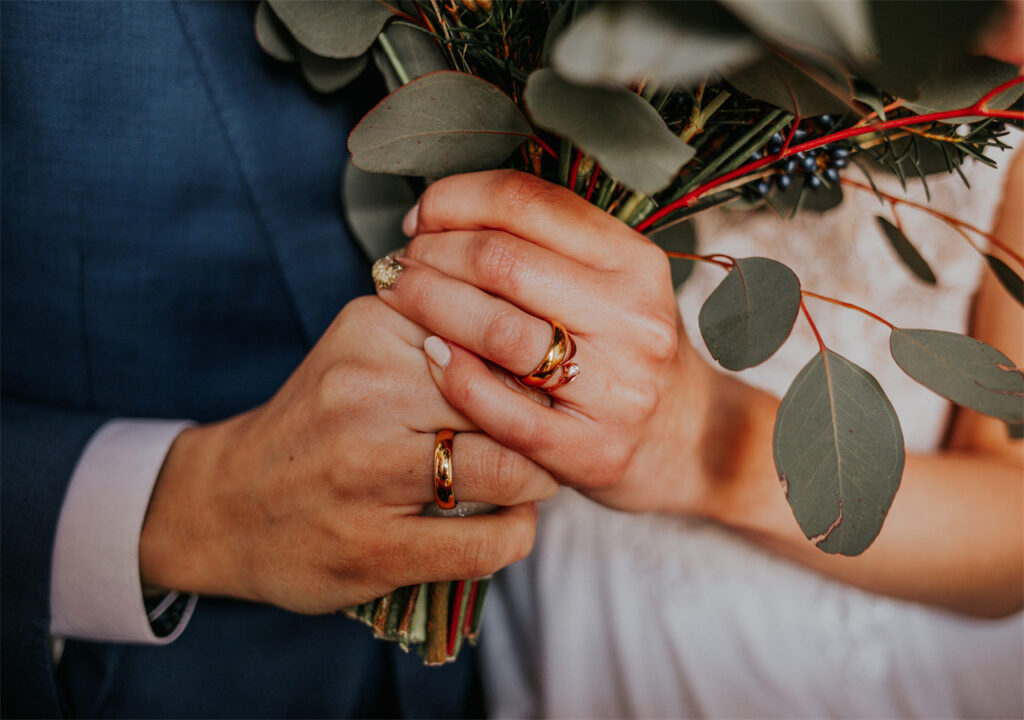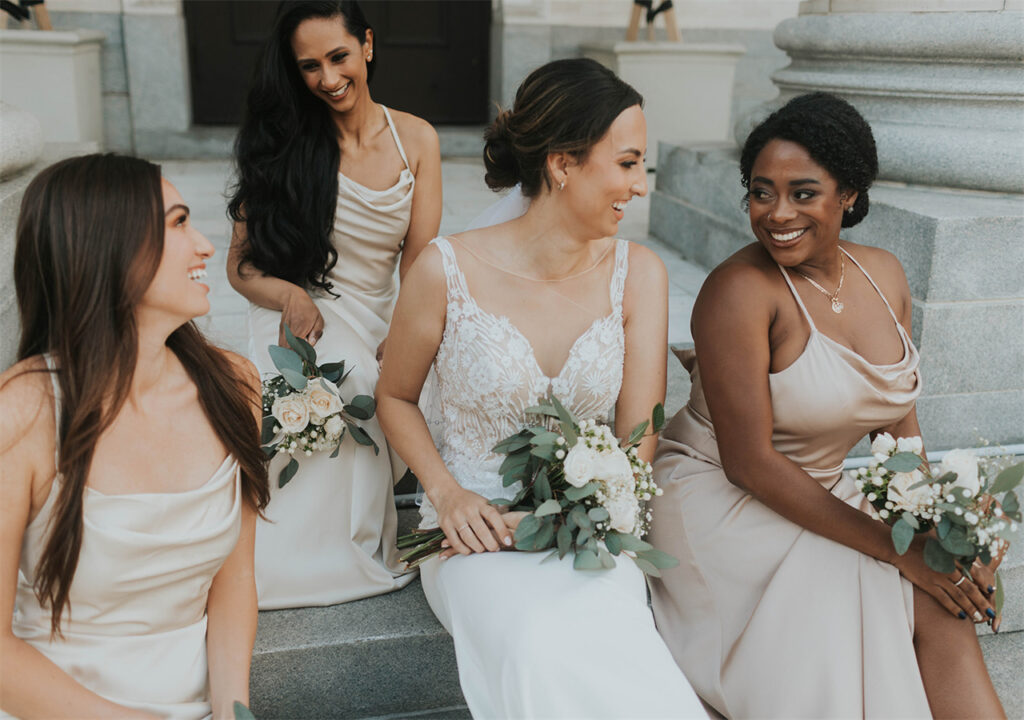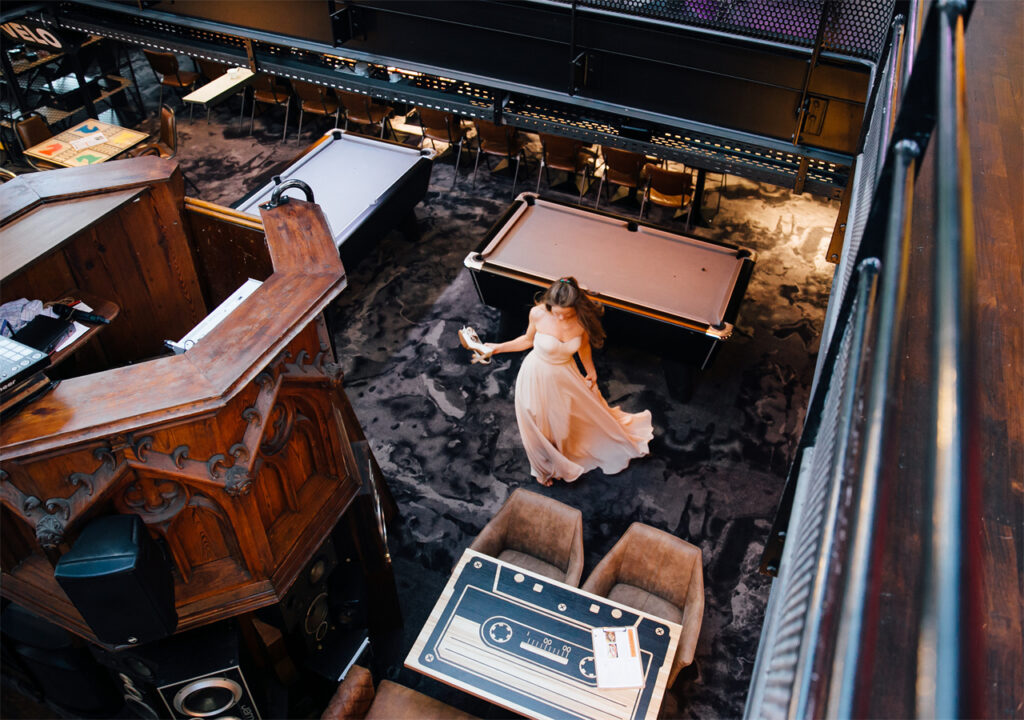Weddings are joyous occasions that unite families and friends to celebrate love and unity. While many weddings follow familiar customs, some fascinating traditions worldwide will surprise you.
Imagine being part of a bridal party where guests throw raw eggs at the newlyweds’ house in celebration! From the lively Tidong people in Borneo to the heartwarming customs of Japan, each culture adds its unique character to this special day.
Join us as we embark on a journey to explore these captivating wedding rituals that showcase the diversity of love and celebration across different cultures.

What Do Brides and Bridesmaids Wear Around the World?
Wedding Dresses:
The Classic White Elegance: In the United States, white wedding dresses are the most popular choice for brides. Symbolizing purity and innocence, these gowns are often accompanied by a veil and a bouquet of flowers.
Vibrant Embroidered Splendor: Traditional Indian brides showcase stunning, colorful attire. They wear a red or maroon sari, adorned with intricate embroidery and embellishments. Elaborate gold jewelry, including necklaces, bangles, and earrings, is also an essential part of the bridal ensemble.
Red and Gold: Symbol of Prosperity: Chinese brides traditionally wear a vibrant red qipao or cheongsam, symbolizing luck and happiness. The dress is often embroidered with intricate patterns and paired with gold jewelry, including a phoenix crown and a dragon and phoenix bangle.
Graceful White Kimono and Colorful Change: Japanese brides wear a beautiful white kimono called a “shiromuku” for the wedding ceremony. This symbolizes purity and fidelity. A white hood-like accessory called “tsunokakushi” is worn to cover the bride’s “horns of jealousy.” Later in the reception, the bride may change into a colorful kimono known as “iro-uchikake.”
Bridesmaid Dresses:
Western Charm: In Western countries such as the United States and Europe, bridesmaid attire often consists of coordinated dresses in a similar style or color palette. The dresses generally complement the bride’s gown while allowing the bridesmaids to have their own distinct identity. Common fabrics include silk bridesmaid dresses, chiffon bridesmaid dresses, or velvet bridesmaid dresses, and colors range from pastels to bold hues, depending on the bride’s preferences.
African Splendor: Nigerian weddings are renowned for their grandeur, rich cultural heritage, and vibrant attire. Bridesmaids’ dresses often reflect the diverse ethnic groups within Nigeria, showcasing a kaleidoscope of colors, patterns, and fabrics. Nigerian bridesmaids may wear gele (headscarves) and iro and bubas (flowing gowns) made from traditional fabrics like ankara or aso-oke. The outfits celebrate Nigeria’s cultural richness and pay homage to the bride’s ancestry.
Vibrant Shades: In traditional Indian weddings, bridesmaids dazzle with their vibrant, colorful outfits. The attire is often made of rich fabrics like silk or brocade, adorned with intricate embroidery, sequins, or beads. Bridesmaids may wear sarees, lehengas, or salwar kameez, accompanied by various accessories like bangles, earrings, and ornate hairpieces. The colors are carefully selected to complement the bride’s ensemble while exuding joy and celebration.
In our quest to explore wedding guest dresses and wedding dresses attire around the world, it becomes evident that these stunning ensembles are not only a reflection of personal style but also deeply intertwined with the unique wedding customs and traditions of each culture. Let’s dive deeper into the fascinating world of bridal fashion while discovering the mesmerizing wedding traditions that accompany them.

Moroccan Brides: Relaxing Milk Baths
Moroccan weddings are primarily known for their unique and relaxing traditions. Before the big day, Moroccan brides indulge in a pampering milk bath. This tradition is believed to bring beauty, purity, and good luck to the bride as she embarks on her journey into marriage.
Romanian Weddings: Ransoming the Bride
In Romania, the wedding festivities take an amusing turn with a tradition known as “ransoming the bride.” The groom must negotiate and pay a ransom to get his beloved back as part of this custom. The groom’s friends act as negotiators, while the bride’s friends playfully demand various items or money in exchange for her return.
This entertaining tradition adds an element of excitement and laughter to Romanian weddings. It showcases the playful banter between both sides and highlights the spirit of camaraderie among friends and family members.
Norway: Brides Wear Crowns
In Norway, brides have a unique tradition of adorning themselves with beautiful crowns during their wedding ceremony. These crowns are intricately designed and often passed down through generations. The crowns symbolize the bride’s purity and nobility as she embarks on her journey into marriage.
Norwegian brides wearing crowns add a touch of elegance to their special day. It showcases their connection to their heritage and family history. The crown serves as a statement piece, highlighting the importance of the bride in the celebration.
Russia: Groom Proves Worth
Russian weddings have an amusing tradition where the groom must prove his worth to marry his bride. This involves various challenges that test his strength, wit, and determination. From solving puzzles to performing physical tasks, the groom must demonstrate his capabilities before he can claim his bride.
On the other hand, Russian grooms participating in challenges bring excitement and entertainment to the wedding festivities. It creates a fun atmosphere as guests cheer on the groom while he overcomes each obstacle. This tradition also emphasizes the groom’s commitment and dedication to proving himself worthy of his future wife.

Scotland: Covering the Couple
In Scotland, there is an exciting wedding tradition where the couple is covered with a special tartan blanket or shawl after they exchange their vows. This practice dates back centuries and is rooted in superstition. Covering the couple is believed to protect them from any evil spirits or negative energies lurking around. The blanket is a shield, ensuring the newlyweds a happy and prosperous future.
Wrapping Up
From diverse wedding attire to relaxing milk baths in Morocco , these wedding traditions from around the world remind us that love and celebration have no boundaries. They serve as a delightful testament to the diverse ways people come together to create memories and honor the bond of marriage.
So, whether you find yourself catching a bouquet in the United States or participating in an energetic “money dance” in the Philippines, remember to embrace the joy, laughter, and surprising customs that make each wedding an unforgettable experience. After all, the world is full of delightful surprises, just like the love stories that unfold within its borders.




